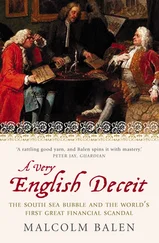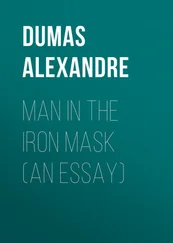Appendix, No. 111.
Appendix, No. 111.
Appendix, No. 112.
Appendix, No. 111.
Appendix, No. 112.
Ibid.
Appendix, No. 115.
Appendix, No. 111.
Appendix, No. 117.
Appendix, No. 113.
Appendix, Nos. 114, 115.
Appendix, No. 120.
Appendix, No. 121.
Appendix, No. 121.
Appendix, No. 123.
Roux (Fazillac).
Ibid.
Ibid.
Appendix, Nos. 124, 125.
Appendix, No. 124.
Appendix, No. 125.
Appendix, No. 124.
Appendix, No. 126.
Delort.
Extract of Dujonca’s journal, in Mr. Craufurd’s article upon “L’Homme au Masque de fer.”
Delort.
Papon in his “Histoire générale de Provence” informs us that he went to see the room.
“Histoire générale de Provence, du Père Papon.”
See “Mélanges d’Histoire et de Littérature,” by Mr. Quintin Craufurd.
See the same work of Mr. Quintin Craufurd.
This must have been Lewis Francis Le Tellier, Marquis de Barbezieux, who, in the preceding year, had succeeded his father, Louvois, in the post of Secretary of State for the War Department. He was an indolent but intelligent Minister. – Died in 1701, aged 33.
Appendix, No. 127.
Delort.
Delort, quoting from an unpublished letter (probably from Barbezieux), dated August 4th, 1698. – It may be as well to mention here that M. Delort frequently quotes portions of letters from the French Archives, but does not publish them in his appendix. When in the course of this narrative the name of M. Delort is given as an authority, it is, for the most part, under these circumstances.
Such is the account given by M. de Palteau, the direct descendant of St. Mars, in a letter to Freron, dated Palteau, June 19th, 1768. It was published in the “Année Littéraire” for that year, and has since been republished by Mr. Craufurd, in his paper on the Iron Mask.
Delort.
The place of “Lieutenant de Roi,” at the Bastille, was created by Lewis the Fourteenth, for M. Dujonca, who had been “Exempt” of one of the regiments of the King’s Body-guards. He acquired great credit by his endeavours to procure the release of the prisoners under his care, whom, upon inquiry, he found to be unjustly detained. Some one represented to him that he would deprive himself of a great portion of his profits by thus diminishing the number of prisoners – to which he replied, “ I can only lose my money, but these unhappy people are deprived of what is more valuable to them than even life itself. ”
These towers are supposed to have been so called from the names of the architects who built them.
Rosarges was made Major of the Bastille by St. Mars.
Extract from the Journal of Dujonca, first published by Griffet, then by St. Foix, and subsequently by Mr. Craufurd.
Appendix, No. 128.
Mr. Craufurd, on the authority of Linguet.
Delort and Craufurd.
Appendix, No. 129.
Appendix, No. 129.
Delort.
Mr. Craufurd, on the authority of M. Delaunay, Governor of the Bastille. Also Register of the Bastille; for which see Appendix, No. 129.
Stephen Francis, Duke de Choiseul, Prime Minister under Lewis the Fifteenth, for above twelve years. A man of some talent, but an unskilful and extravagant minister; in spite of which, on his disgrace, (through the means of Madame du Barri, in 1770) he was turned into a martyr, by the influence of the ladies of the court, who were angry with the King for choosing his mistresses from the lower orders, instead of among them. To do him honour snuff-boxes were made, bearing the head of Sully on one side, and that of the Duke de Choiseul on the other. One of them being shown to Sophie Arnoud , the actress, celebrated for her repartees, she looked at the two sides, and said, “ C’est la recette – et la dépense .”
This first answer of the king ought not to be entirely overlooked; as, it will be remembered, that at the time it was made, the minister of the Duke of Mantua had not been mentioned by any one as the Iron Mask. He was first suggested to have been that prisoner, by the Baron de Heiss, in a letter to the authors of the “Journal Encyclopédique,” dated Phalsbourg, June 28th, 1770; in which he grounded his opinion upon a letter, published in a work entitled “L’Histoire Abregée de l’Europe;” published at Leyden in 1687; giving a detailed account of the arrest, by French agents, of a secretary of the Duke of Mantua.155. M. Dutens, in his “Correspondance Interceptée,” published in 1789, held the same opinion, grounded upon the same authority. He afterwards repeated the same opinion in his “Mémoires d’un Voyageur, qui se repose.” Finally, M. Roux, (Fazillac) in 1801, published his work upon the Iron Mask; in which he supported the same opinion; and attached to the Secretary the name of Matthioli.
Jane Antoinette Poisson, married to a financier named Le Normand d’Etioles; created Marquise de Pompadour by Lewis the Fifteenth, of whom she was first the mistress, and afterwards the minister of his disgraceful debauches. At her death, in 1765, the King showed no signs of grief; and on seeing her funeral go by his windows on a rainy day, his only remark was, “La Marquise aura aujourd’hui un mauvais temps pour son voyage!”
Appendix, No. 131.
Appendix, Nos. 131, 132. Madame Campan mentions having heard Lewis the Sixteenth tell his wife, that the Count de Maurepas (who, both from his age and situation, was very likely to know the truth,) had informed him that the Iron Mask was “a prisoner dangerous from his intriguing disposition, and a subject of the Duke of Mantua.”
The name of the place is not stated in the letter.












